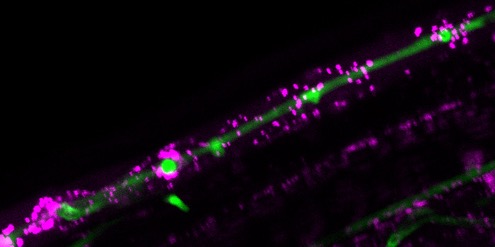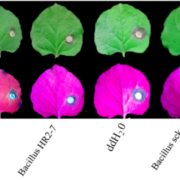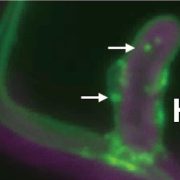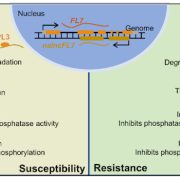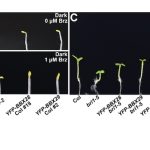Mitochondrial ROS promise broad-spectrum disease resistance
Yang et al. identify a connection between a mitochondrial RNA-processing factor and plant disease resistance. https://doi.org/10.1093/plcell/koac082
Yang Yang and Weixing Shan
State Key Laboratory of Crop Stress Biology in Arid Areas and College of Agronomy, Northwest A&F University, Yangling, Shaanxi 712100, China
Background: Diseases are major constraints for sustainable crop production. Phytophthora pathogens are notorious for their ability to overcome host genotype-specific resistance. Although pathogen effector recognition-based disease resistance is well documented, little is known about plant susceptibility. Developing novel strategies based on understanding plant susceptibility is an alternative strategy to improve crop disease resistance. A forward genetics approach was employed to understand plant susceptibility to Phytophthora pathogens in Arabidopsis thaliana, leading to the identification of the mitochondrial RNA processing factor RESISTANCE TO PHYTOPHTHORA PARASITICA 7 (AtRTP7). Mitochondria contain many core subunits of complexes in the electron transport chain (ETC) required for energy production. The mitochondrial transcripts encoding ETC components are processed via RNA splicing and RNA editing.
Question: How does the mitochondrial RNA processing factor RTP7 mediate plant susceptibility? Is the rtp7-mediated resistance effective against a broad spectrum of pathogens? We addressed these using a range of approaches.
Findings: We found that RTP7 encodes a pentatricopeptide repeat protein in Arabidopsis thaliana and negatively regulates plant immunity to the oomycete Phytophthora parasitica and fungal and bacterial pathogens. RTP7 participates in intron splicing of nad7, which encodes a core subunit of complexes in the ETC, and regulates mitochondrial ROS (mROS) accumulation, which is responsive to pathogen infection. By using ROS scavengers to reduce mROS levels and by generating double and triple mutants of rtp7 with the plasma membrane-localized NADPH oxidases rbohD and rbohF, we showed that the broad-spectrum disease resistance of rtp7 plants is mediated by enhanced mROS, but not the ROS produced by host plant plasma membrane-associated RBOHD and RBOHF.
Next steps: We showed a close link between mitochondrial RNA processing in regulating mROS bursts and plant disease resistance against a broad spectrum of pathogens. The conserved immune function of RTP7 reveals its great potential in engineering novel disease resistance in crops against diverse pathogens in the future.
Reference:
Yang Yang, Yan Zhao, Yingqi Zhang, Lihua Niu, Wanyue Li, Wenqin Lu, Jinfang Li, Patrick Schäfer, Yuling Meng, Weixing Shan (2022). A mitochondrial RNA processing protein mediates plant immunity to a broad spectrum of pathogens by modulating the mitochondrial oxidative burst. https://doi.org/10.1093/plcell/koac082


